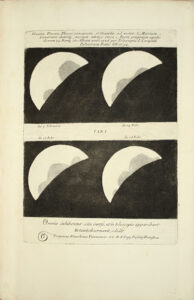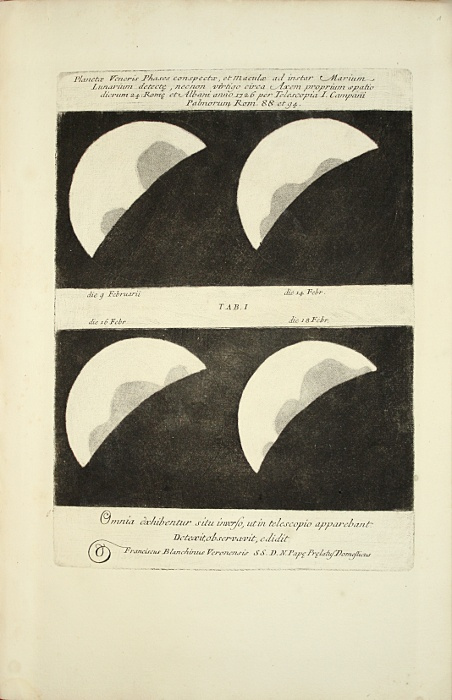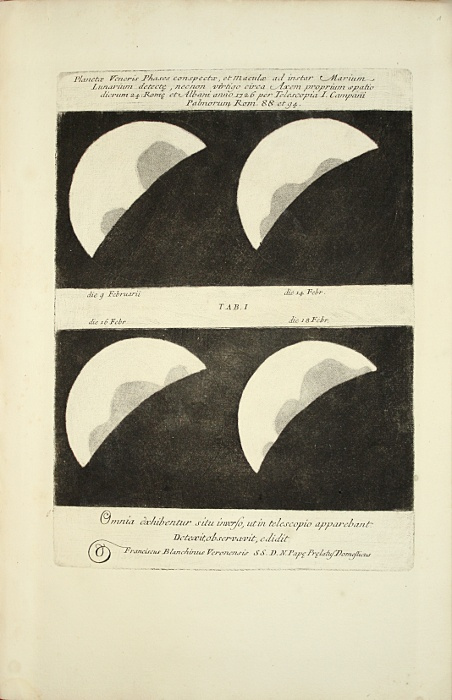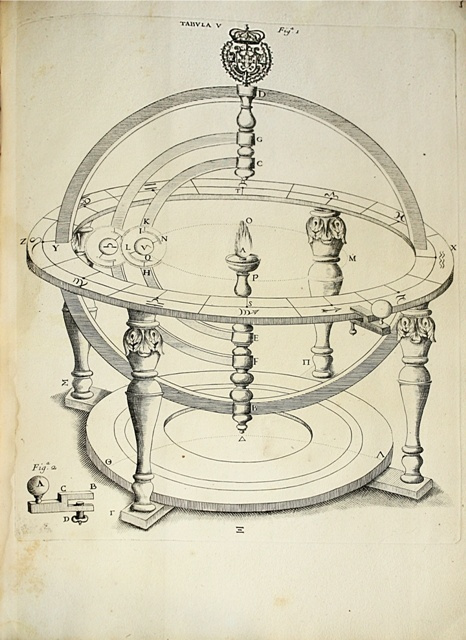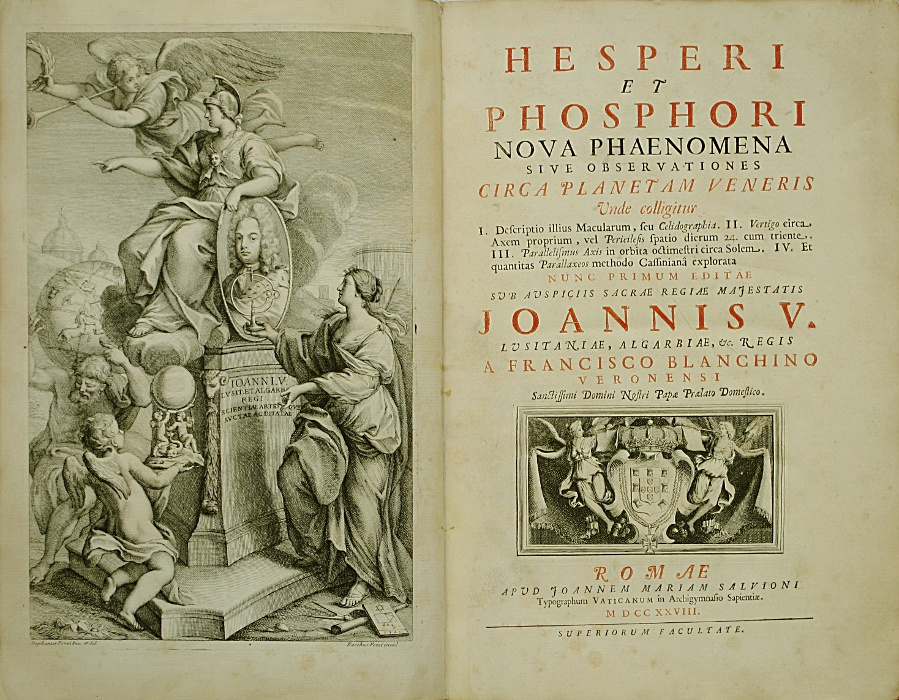Rome, Giovanni Maria Salvioni, 1728.
Folio [380 x 250 mm] of 1 frontispiece, viii pp. including the title-page printed in red and black, 92 pp., 10 plates out of pagination including 4 folded, 3 engravings in the text. A tear without loss of text in the margin of p. 29. Bound in recent light-brown mottled half-roan, spine ribbed, red morocco lettering piece, mottled edges.
Rare first edition relating for the first time the presence of dark spots on Venus. It is the first atlas of this planet, in which Bianchini determines its axis of rotation.
Riccardi, I, 132; Graesse, I, 437.
« It is in this work that Bianchini recorded his observations of the dark spots of the planet Venus. He determined the rotating movement of this planet. He had his book printed splendidly, dedicated it to the King of Portugal John V, to whom he offered at the same time a machine representing the system of this planet, decorated with gilt silver figures. The king sent in return to the author, in addition to an important sum of money, a new telescope made in London, and which work was admirable; since then he awarded, in 1731, two years after Bianchini’s death, the Cross of the Order of Christ to the count Gaspard Bianchini, his nephew, and he added, in 1732, a commander’s residence, by paying with his treasure the due costs for the shipping of the diploma, to the coffers of the order, and all the other expenses. »
Francesco Bianchini (1662-1729) was received member of the physics and mathematics Academy, created by Monsignor Ciampini.
« In 1717, he had an accident which interrupted important observations that he had started on the planet Venus, the first ones dating back to 1716; he took them up again. Then he made incredibly peculiar observations on the dark spots of this planet. He made them with the machine that he had presented to the Academy of Paris; and by using stronger telescopes than the ones used until then, he made brand new observations and discoveries. He was keeping on at the same time with his work on the tombs of the House of Augustus: “he shut himself up during the day, Fontenelle says, in the sepulchral underground dovecote, and at night he went up to his observatory.” This is how were published, in two consecutive years, 1727 and 1728, two important works, one about the dovecote, and the other on Venus. It is by these two remarkable productions that he ended his career. » Michaud
Besides the present work is an important example of illustration in Italian books from the 18th century.
It is illustrated with a frontispiece engraved by Rocco Pozzi after Stefano Pozzi, with 3 engravings in the text and with 10 plates out of pagination dedicated to Bianchini’s discoveries, 3 among them (2 in the text and 1 plate out of pagination) being executed in mezzotint.
One of the engravings illustrating the second chapter represents the lunar crater Platon and 2 of the full-page plates show contemporary telescopes.
William Ashworth noted in the catalogue oh his exhibition entitled The Face of the Moon that : « This small engraving, which appears in the text as part of the introductory chapter, shows the crater Plato at the right, with Aristotle and Eudoxus at left, and the mountain range of the alps cut by the dramatic slash of the Alpine Valley. Bianchini noted with surprise that the valley did not appear on the great Cassini map, and he was right; Bianchini was the first to see and to portray this most impressive of lunar valleys” (p. 11).
A good copy of this rare first edition of the utmost interest with regard to astronomy.
